Sept. 24, 2016 show
Landmark buildings reborn as schools
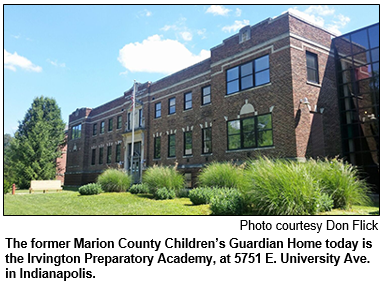 Shaped like a ship in some ways, one building is on the banks of the White River and was used to train radio operators in the U.S. Navy during World War II. Shaped like a ship in some ways, one building is on the banks of the White River and was used to train radio operators in the U.S. Navy during World War II.
Another building was the home of an art institute and a gallery that preceded the Indianapolis Museum of Art.
And a third historic building housed generations of children who were abused, neglected or abandoned.
All three landmarks in Indianapolis have been - or will be - converted into charter schools.
The newest, to be called Riverside High School, is expected to open next fall in the former Heslar Naval Armory, a white Art Moderne structure built in the 1930s on West 30th Street. It will be the second campus of Herron High School, a widely acclaimed charter school that opened in 2006 on the former site of what began as the John Herron Art Institute in 1902.
In Irvington, the historic neighborhood on the east side of Indy, the former Marion County Children's Guardian Home has become the site of Irvington Preparatory Academy.
The Marion County Children's Guardian Home opened the building in 1918 for children in need of emergency shelter. (According to an article in Connections magazine, a publication of the Indiana Historical Society, an earlier structure that served as a county guardian home on the Irvington site was destroyed by a fire.)
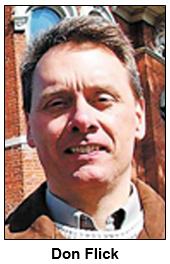 To share insights about the three landmark buildings and the process of converting them into schools, Nelson will be joined in studio by three guests: To share insights about the three landmark buildings and the process of converting them into schools, Nelson will be joined in studio by three guests:
- Janet McNeal, president and head of school at Herron High, which is at 16th and Pennsylvania streets. When Riverside High School opens, she will serve as the president and head of both schools. Herron, which is attended by more than 830 freshmen through seniors, currently has a waiting list of more than 400 students. Riverside is expected to open with 200 freshmen in 2017, with another class added annually until it also serves 9th- through 12th-graders.
- Sharon Gamble, vice president for development at Indiana Landmarks, the statewide historic preservation organization that has played a key role in the planned re-use of the Naval Armory. The highly distinctive structure is 60,000 square feet and has dozens of nautical elements. They include porthole windows on interior doors, a room used to simulate conditions on a submarine, and a naval officers' barroom that will become a coffee lounge for teachers. A former drill hall will become a gym used by students at both Riverside and Herron high schools.
- And Don Flick, an Irvington-based architect who converted the Marion County Children's Guardian Home into a charter school. Don, a principal of Pyramid Architecture, also is the board president of the Irvington Historical Society. In 2010, Irvington Prep moved into the historic building after opening (with a different name) elsewhere in the neighborhood four years earlier.
 The Naval Armory trained naval officers until 2015. When radio operators were being trained in the building during World War II, "it is believed that top-secret planning for important battles occurred there," according to an article in Indiana Preservation,a magazine published by Indiana Landmarks. The Naval Armory trained naval officers until 2015. When radio operators were being trained in the building during World War II, "it is believed that top-secret planning for important battles occurred there," according to an article in Indiana Preservation,a magazine published by Indiana Landmarks.
After World War II, the armory trained naval reservists. The building also served as a meeting space for reservists and their families.
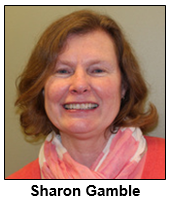 Many students in the new high school in the historic building are expected to come from the Riverside neighborhood, where the former armory is located. Even before the armory was built during the Great Depression, the site along the White River had distinctive uses. In the early 1900s, the Indianapolis Canoe Club was located there. Many students in the new high school in the historic building are expected to come from the Riverside neighborhood, where the former armory is located. Even before the armory was built during the Great Depression, the site along the White River had distinctive uses. In the early 1900s, the Indianapolis Canoe Club was located there.
The beginnings of the Marion County Children's Guardian Home even predate that. An emergency shelter program for neglected, abused and abandoned children in Indianapolis was begun in 1889.
"Thousands of children went through the home's program over its 120-year history. ... For many, it was the only stable home they had ever known," according to the Connections article.
"This was a new concept. It was not an orphanage or reformatory, but a rescue program for children, initially ages newborn to 15 years, who were neglected, abused or abandoned by family or guardians."
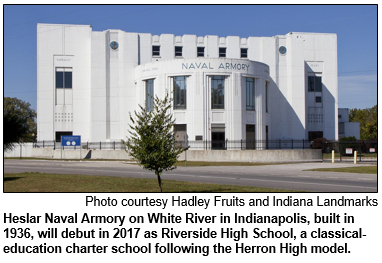 The Connections article notes that the last child to reside at the Marion County Children's Guardian Home departed in 2009. The guardian home - now Irvington Prep - is located at 5751 E. University Ave. The Connections article notes that the last child to reside at the Marion County Children's Guardian Home departed in 2009. The guardian home - now Irvington Prep - is located at 5751 E. University Ave.
At the Herron site, generations of students from across Indiana and beyond studied at what became the John Herron School of Art. Now part of IUPUI, the art school moved to the main campus - along with the Herron Gallery - before the launch of the charter school.
With a classical liberal arts curriculum, Herron High requires all students to take Latin, grammar, logic and rhetoric. U.S. News and World Report has ranked Herron in the top one percent of the country's public high schools.
So, with the waiting list, the need for a second campus has been apparent. The Naval Armory has been owned by the city since the Navy moved out. The city has been shifting ownership to Indiana Landmarks, which, in turn, will transfer the title to the high school. Herron High officials are in the midst of fund-raising for the conversion project.
Another example of the evolution planned for the Naval Armory: A mess hall - with paintings done by the WPA during the Depression - will be converted into a student cafeteria for the Riverside High School students.
Roadtrip: Thorntown, Stookey's and Serum Plant Road
Guest Roadtripper Bonnie Carter of Zionsville suggests a visit to Thorntown in Boone County, just northwest of Indianapolis. Thorntown is celebrating its Festival of the Turning Leaves this weekend. Enjoy a parade, a corn hole tournament, and a banjo and fiddle contest; all that a small Indiana town has to offer as we celebrate the coming fall season.
Hungry? Bonnie recommends Stookey's Family Dining in Thorntown for home cooking, including steaks, catfish and onion rings.
And don't forget to drive down Serum Plant Road; Bonnie became fascinated with the name of this road and did a little research. It turns out that hog cholera was a huge problem in the country a hundred years ago, and in 1916 a group of local hog breeders put together the Swine Breeder's Pure Serum Company, which had a big manufacturing plant along this road. The plant no longer exists, but Bonnie will share a little more local history on Saturday.
History Mystery
A historic structure built of limestone in downtown Indianapolis has had several vastly different uses. It opened in 1901 as a Protestant church. In the late 1940s, though, the congregation moved to the north side.
The limestone building became an educational institution, offering post-high school training. Even though the structure housed a training institution for more than 50 years, minimal alterations were made to its interior, which included a sanctuary from its decades as a church. The training institution moved out in 2003.
In recent years, the limestone structure in downtown Indy was converted into condos.
Question: Name either the church that initially was housed in the historic building or the training institution that was located in it for more than 50 years.
Hint: The historic building is near the downtown (central) branch of the Indianapolis Public Library.
The call-in number is (317) 788-3314. Please do not call into the show until you hear Nelson pose the question on the air, and please do not try to win the prize if you have won any other prize on WICR during the last two months. You must be willing to give your name and address to our engineer and be willing to be placed on the air.
The prize is a Family 4-Pack to Conner Prairie, including 4 tickets to the 1859 Balloon Voyage, courtesy of Visit Indy. Still some nice weather left in the season to soar up in the sky with this tethered balloon!
Your Hoosier History Live team,
Nelson Price, host and creative director
Molly Head, producer, (317)
927-9101
Richard Sullivan, webmaster and tech director
Pam Fraizer, graphic designer
Garry Chilluffo, media+development director
www.hoosierhistorylive.org

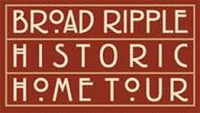 
 
 
 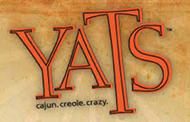
Please tell our sponsors that you appreciate their support: Broad Ripple Historic Home Tour | Indiana Authors Award | Indiana Historical Society | Lucas Oil | Mr. Tequila's Cantina & Grill | Scott Keller Appraisals | Shirley Brothers Mortuaries & Crematory | Story Inn| Yats Cajun Creole Restaurant
  Acknowledgments to Monomedia, Visit Indy, WICR-FM, Fraizer Designs, Heritage Photo & Research Services, Derrick Lowhorn and many other individuals and organizations. We are an independently produced program and are self-supporting through organizational sponsorships and individual contributions. We do not receive any government funding. Visit our website to learn how you can support us financially. Also, see our Twitter feed and our Facebook page for regular updates. Acknowledgments to Monomedia, Visit Indy, WICR-FM, Fraizer Designs, Heritage Photo & Research Services, Derrick Lowhorn and many other individuals and organizations. We are an independently produced program and are self-supporting through organizational sponsorships and individual contributions. We do not receive any government funding. Visit our website to learn how you can support us financially. Also, see our Twitter feed and our Facebook page for regular updates.
Oct. 1 show
All about Ben-Hur
First, it was an enormously popular novel of the 1880s written by Lew Wallace, an adventurous, flamboyant Hoosier who was a Civil War general, attorney, diplomat and politician. Many historians believe that, other than the Bible, Ben-Hur was read by more people in its era than any other book.
Ben-Hur also has been the basis for blockbuster movies and theatrical productions. The 1959 film version starring Charlton Heston won a then-record eleven Academy Awards.
In the wake of yet another movie remake (released in August) of Ben-Hur, Nelson will be joined by three experts to explore all aspects of the cultural phenomenon associated with chariot races, the Roman Empire and slave ships.
Wallace (1827-1905), the son of Indiana's sixth governor, wrote Ben-Hur without ever having visited the Middle East - although, following his book's spectacular success, President James Garfield appointed him diplomat to Turkey. Earlier, President Rutherford B. Hayes had appointed him governor of the New Mexico Territory.
Our guests will be:
- Larry Paarlberg, director of the Gen. Lew Wallace Study & Museum in Crawfordsville. In addition to housing an array of Wallace's personal possessions, the museum has artifacts from the various movie versions of Ben-Hur, including a silent film in 1925 that became one of the top-grossing motion pictures of its era.
- Chandler Lighty, director of the Indiana Historical Bureau. A native of Montgomery County, Chandler was the public historian at the Gen. Lew Wallace Study & Museum early in his career.
- And Howard Miller, an emeritus professor at the University of Texas-Austin and a renowned Ben-Hur scholar. He is working on a book about its cultural impact and will join us during a visit to Crawfordsville, Wallace's adopted hometown.
The title character in Ben-Hur is a Jewish prince who lives in Roman-occupied Jerusalem during the coming of Christ.
Some history facts: Wallace apparently wrote most of the novel underneath a beech tree near his Crawfordsville home; he completed it while serving as governor of the New Mexico Territory. (During his stint in the West, Wallace dealt with various gunslingers, including Billy the Kid.)
And by 1900, Ben-Hur had become the best-selling novel of the 19th century, exceeding the legendary Uncle Tom's Cabin.
Additional research courtesy Mick Armbruster.
© 2016 Hoosier History Live! All rights reserved.
|